Cataloguing of all 17th Century Books by Athanasius Kircher Complete!

 On the 15th of May, Hermine Lefebvre, USTC/ENSSIB intern for 2014, completed a wonderful cataloguing project which has seen all of St Andrews’ 17th century editions of Athanasius Kircher added to the online catalogue. Since last year, faculty at ENSSIB have selected one student to come to St Andrews for the spring term to work as an intern for the Universal Short Title Catalogue Project. As part of their internship, the student works one day-a-week in the Special Collections Division of the University Library, learning and practicing advanced bibliographic description and cataloguing using rare book collections.
On the 15th of May, Hermine Lefebvre, USTC/ENSSIB intern for 2014, completed a wonderful cataloguing project which has seen all of St Andrews’ 17th century editions of Athanasius Kircher added to the online catalogue. Since last year, faculty at ENSSIB have selected one student to come to St Andrews for the spring term to work as an intern for the Universal Short Title Catalogue Project. As part of their internship, the student works one day-a-week in the Special Collections Division of the University Library, learning and practicing advanced bibliographic description and cataloguing using rare book collections.
Hermine arrived in St Andrews at the end of February this year, and was scheduled to work 12 full-time days in Special Collections during her stay here (actually only working 10 full-time days because of scheduling conflicts). The majority of her time in St Andrews was spent working the USTC staff and database, where she was responsible for improvements to the French Latin data – adding over 4,000 full title page transcriptions in her time here from 16th century French books from Lyon and Paris. In addition, she matched Incunabula digital copies from the Vatican library to USTC records, further enhancing the coverage of digital editions in the USTC.
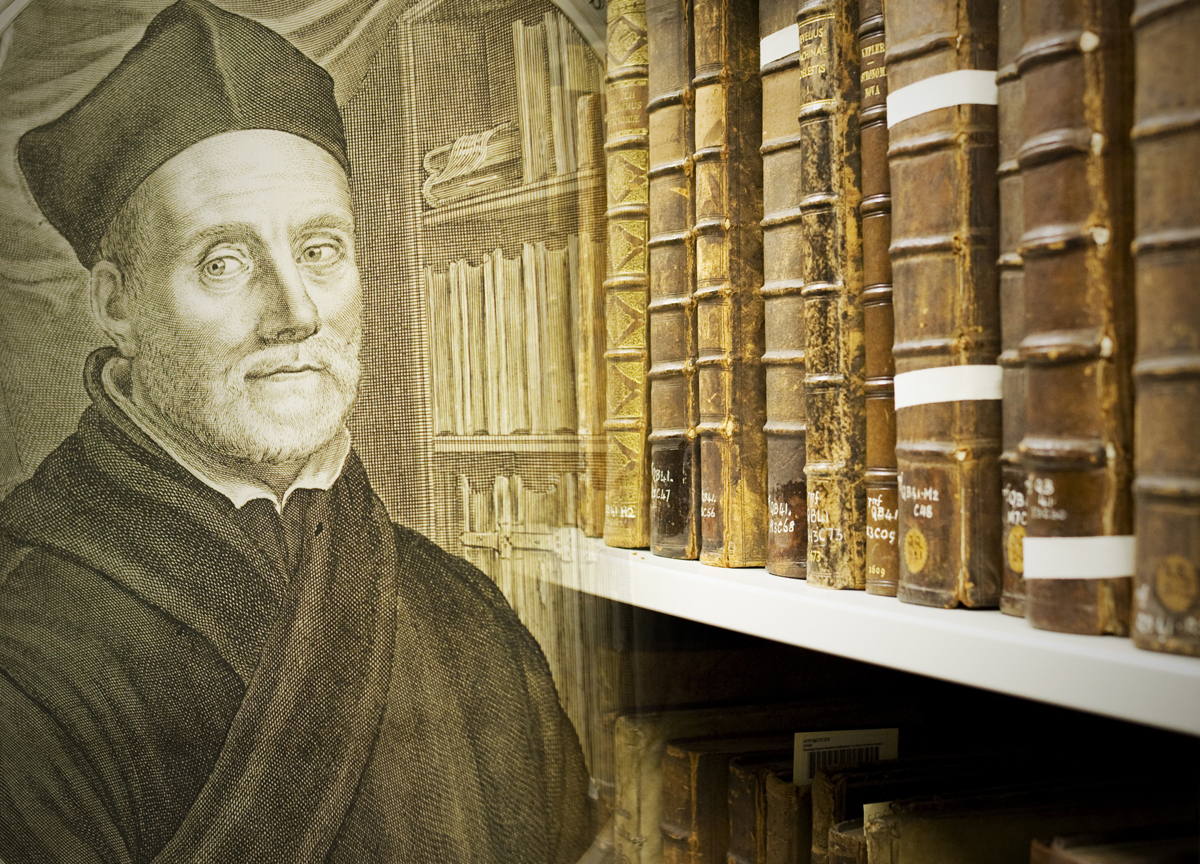
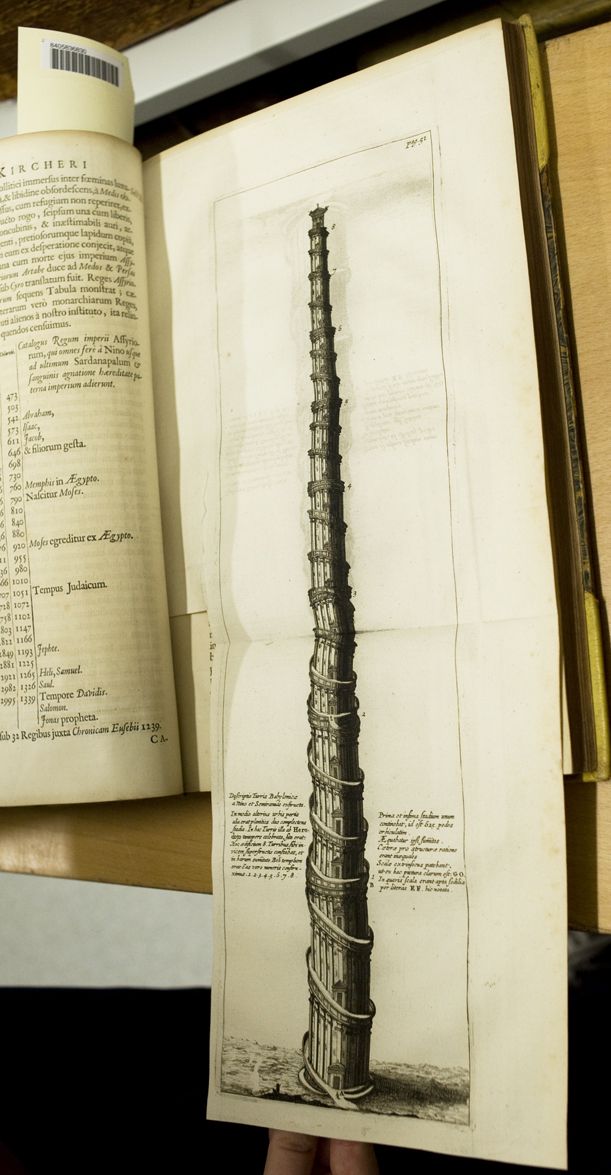
As I have wandered the stacks of our 17th century collections (one of the perks of the job), I’ve often noticed a preponderance of spine titles with “KIRCHER” attributed as author. I’ve only had the chance to pull one or two of these off the shelves, but each time I do I’m blown away. Our 17th century collections are a veritable treasure trove, at over 5,000 volumes and very few of them catalogued, these Kircher books were itching to get catalogued.
So, when Hermine arrived, I already had a project in mind. Hermine came to St Andrews having been trained in bibliography by Dominique Varry, however she had very little practical experience working in a historic library setting. I first asked her to familiarise herself with Kircher, as she had no idea who he was, and then I introduced her to our old paper catalogue (and our microfiche of it) which was the Library’s main catalogue, organised by author, until the introduction of SAULCAT in the early 80’s. Hermine was set loose on this microfiche to make a list of all works by Kircher in our collection (23!) and pulled them for cataloguing.
For those who haven’t seen many of Kircher’s works from the 17th century, here are some images from a select few:
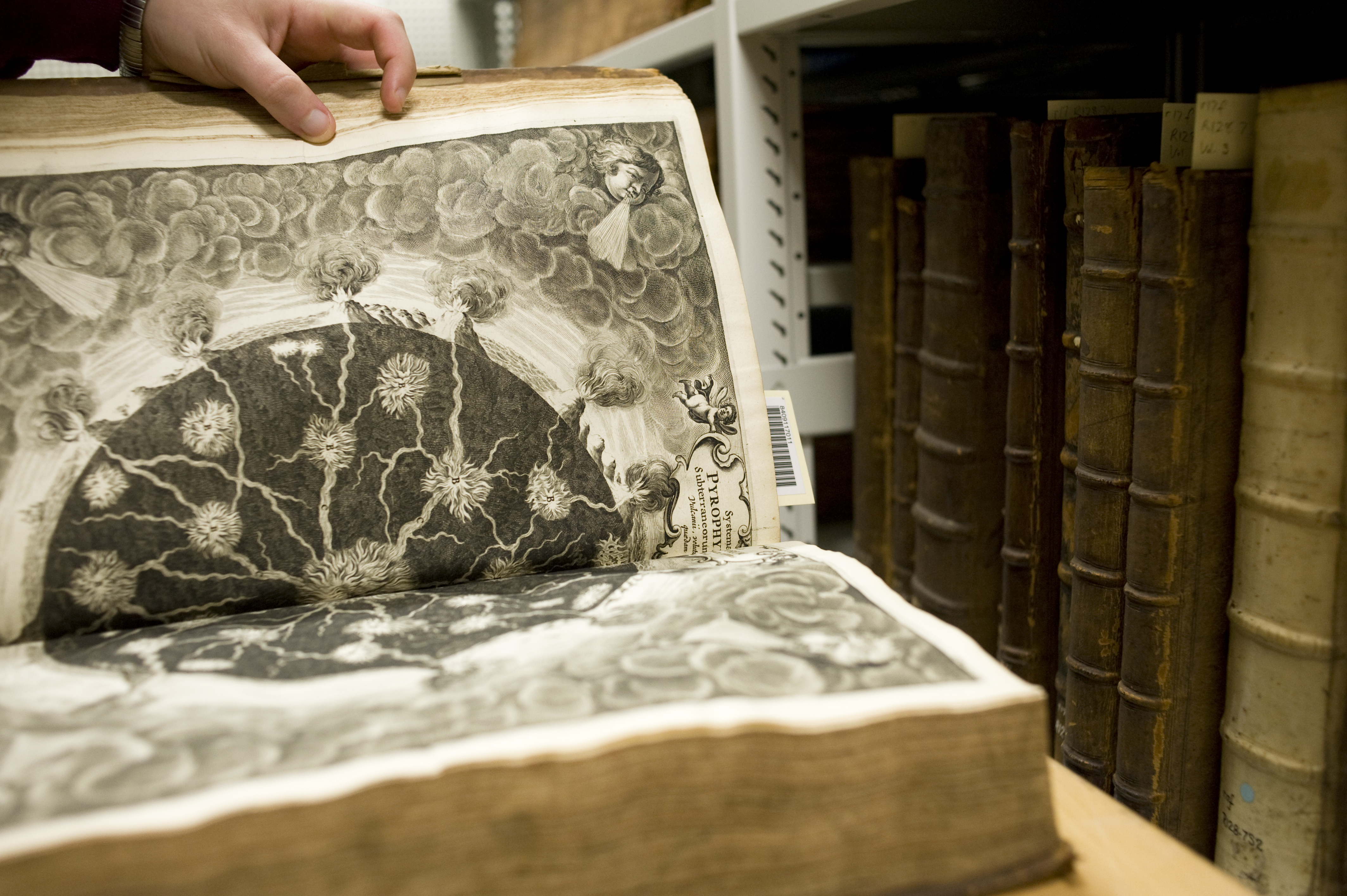

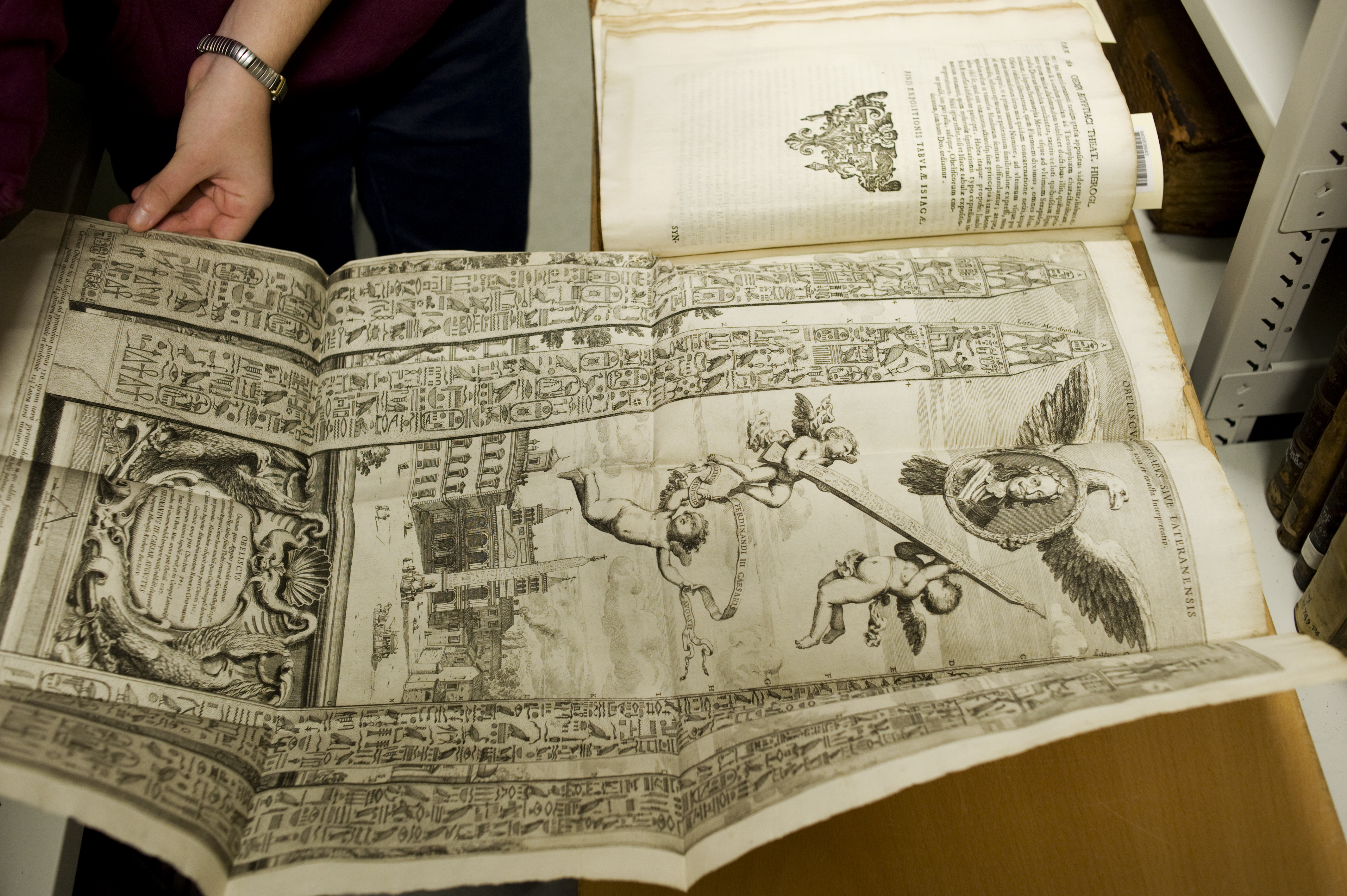
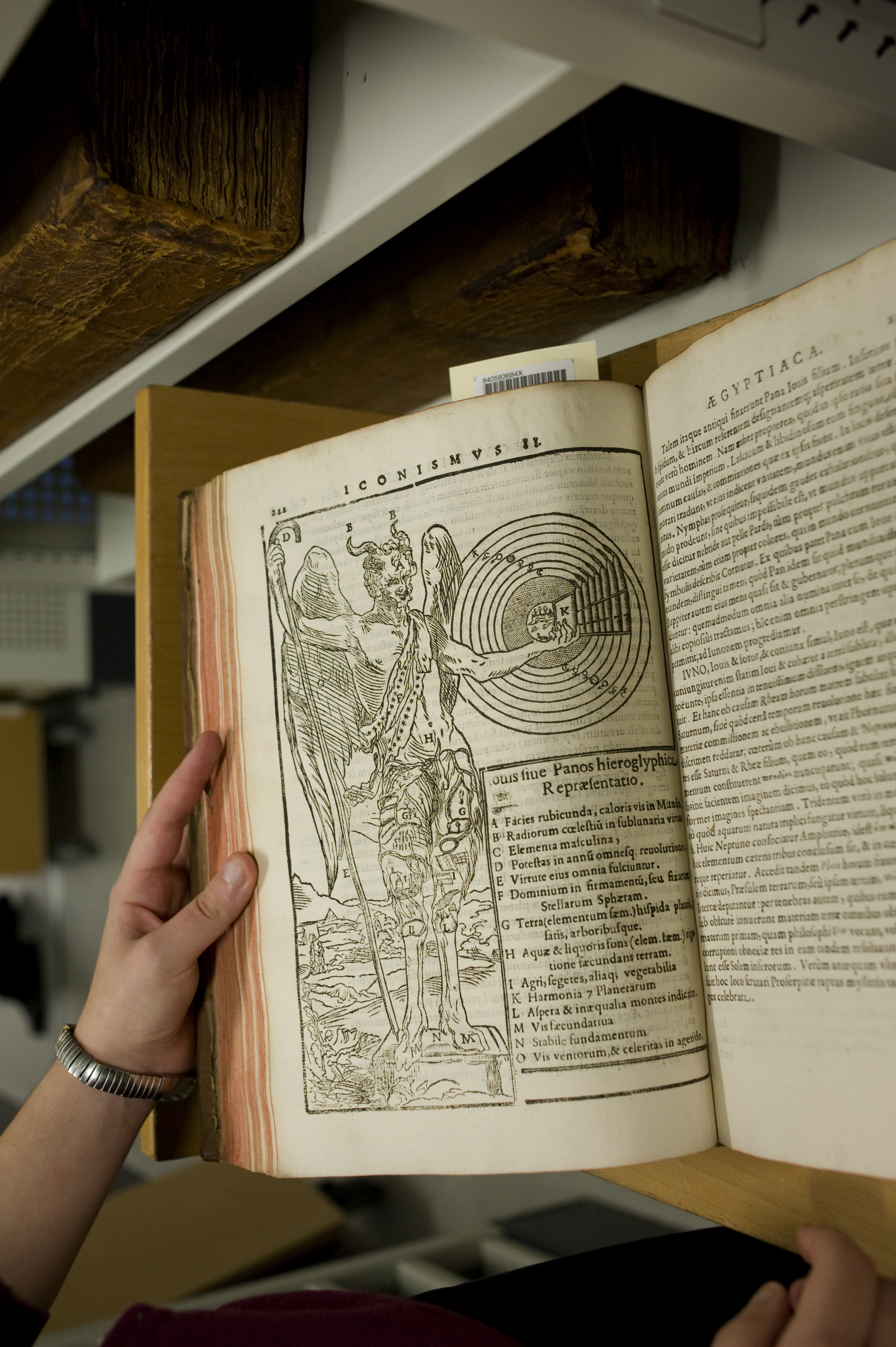
Kircher was one of the great polymaths of the 17th century, publishing on everything from magnetics to light and perspective, from astronomical works to the history of Egypt, from works rationalising the Ark and the Tower of Babel to scientific treatises on the subterranean world. Many of Kircher’s works are beautifully illustrated with a combination of in-text images and full-plate engravings. Kircher’s books not only carried his authoritative voice but were backed by the financial and intellectual wealth of the Jesuits and their network.
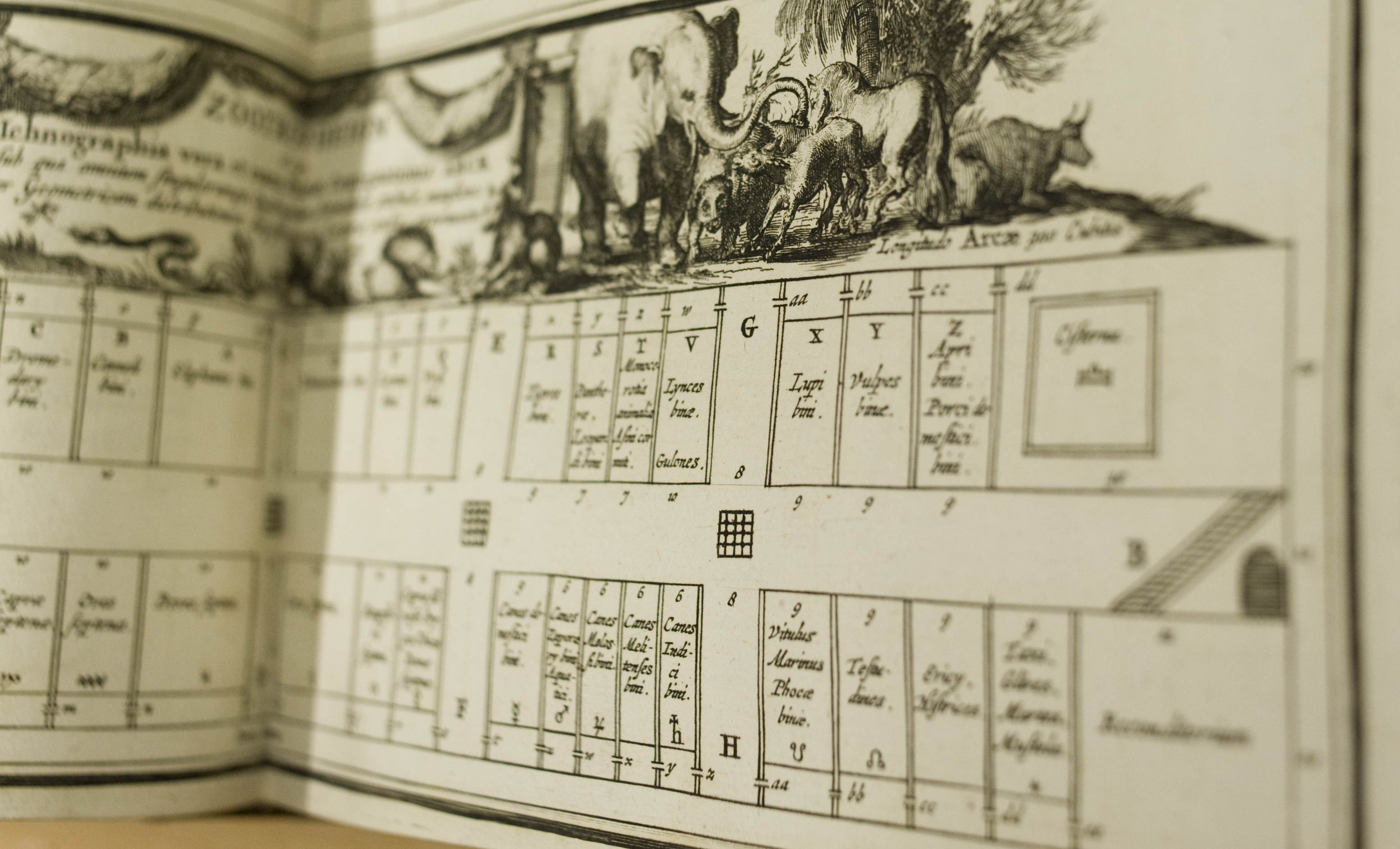
As the first books started coming off the cataloguing trolley and onto Hermine’s desk, she was quickly emerged into the world of 17th century printing. Hermine had the chance to stretch her bibliographic muscles by compiling collation and pagination statements for these large works and spent a great deal of time tracing all who were involved in each book’s production: added authors, publishers, printers, artists, engravers, binders, former owners, etc. One particular difference between French rare book cataloguing and Anglo-American work is that the authority work is different in France, where Bibliothèque nationale de France authorities are used, and if nothing is found then the default is VIAF (instead of using LoC authorities or CERL Thesaurus).
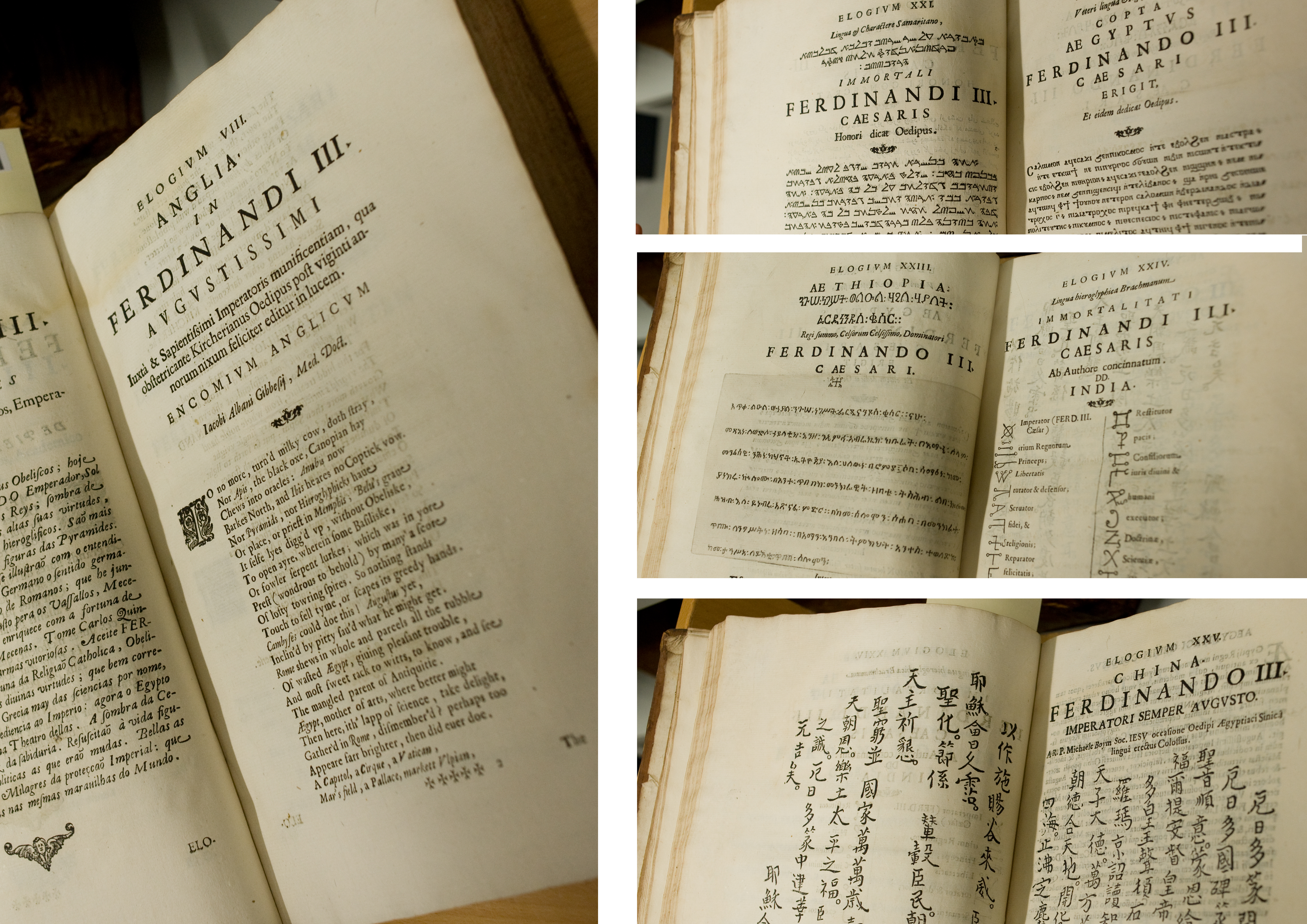
Hermine got stuck into this project and completed some fantastic records, detailing divisional title pages, dedications and dedicatees, and practising her binding descriptions in English. She particularly enjoyed working on the corpus of one author, providing her a unique look at Kircher as author and giving her a more complete sense of project. Her favourite works were Arc Noe and Turris Babel for “their amazing illustrations and scale” and Kircher’s magnum opus, Oedipus Aegyptiacus for its wonderful illustrations and also for its multi-lingual dedication.
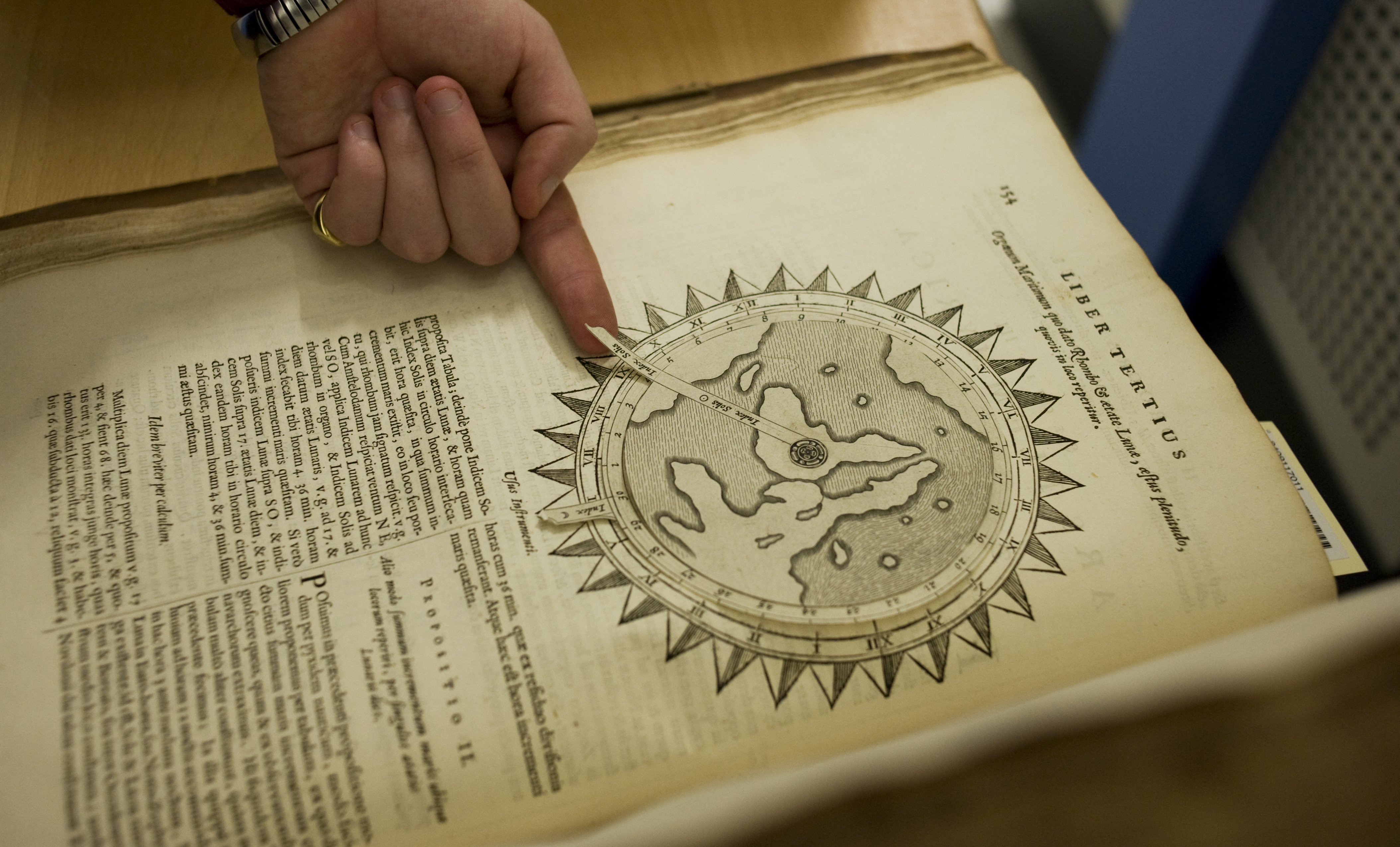
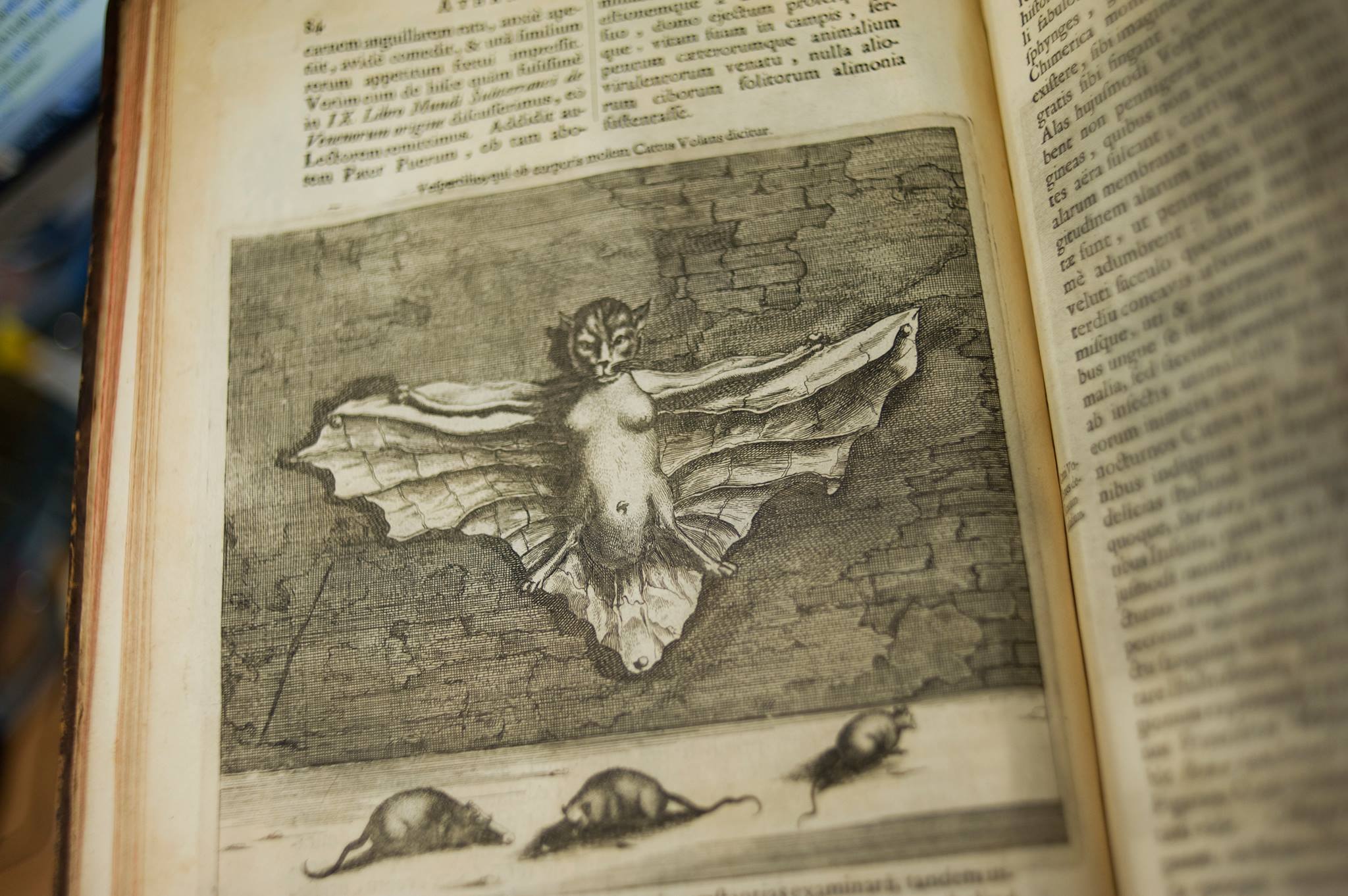
One of the pleasures of having Hermine working on this project was being able to peek over her shoulder to see what she was working on. This blogger’s favourite Kircher book has to be his China monumentis, which is full of fantastical engravings of the flora and fauna of the East. We posted up an image of the “Flying cat of Kashgar” (left) from this book on our Facebook page a few weeks ago and it went viral within a few hours!
Hermine is finishing this summer at ENSSIB, will be taking training classes to seek work at the BnF afterwards. We here at St Andrews wish her all the best and thank her for her hard work.
–DG
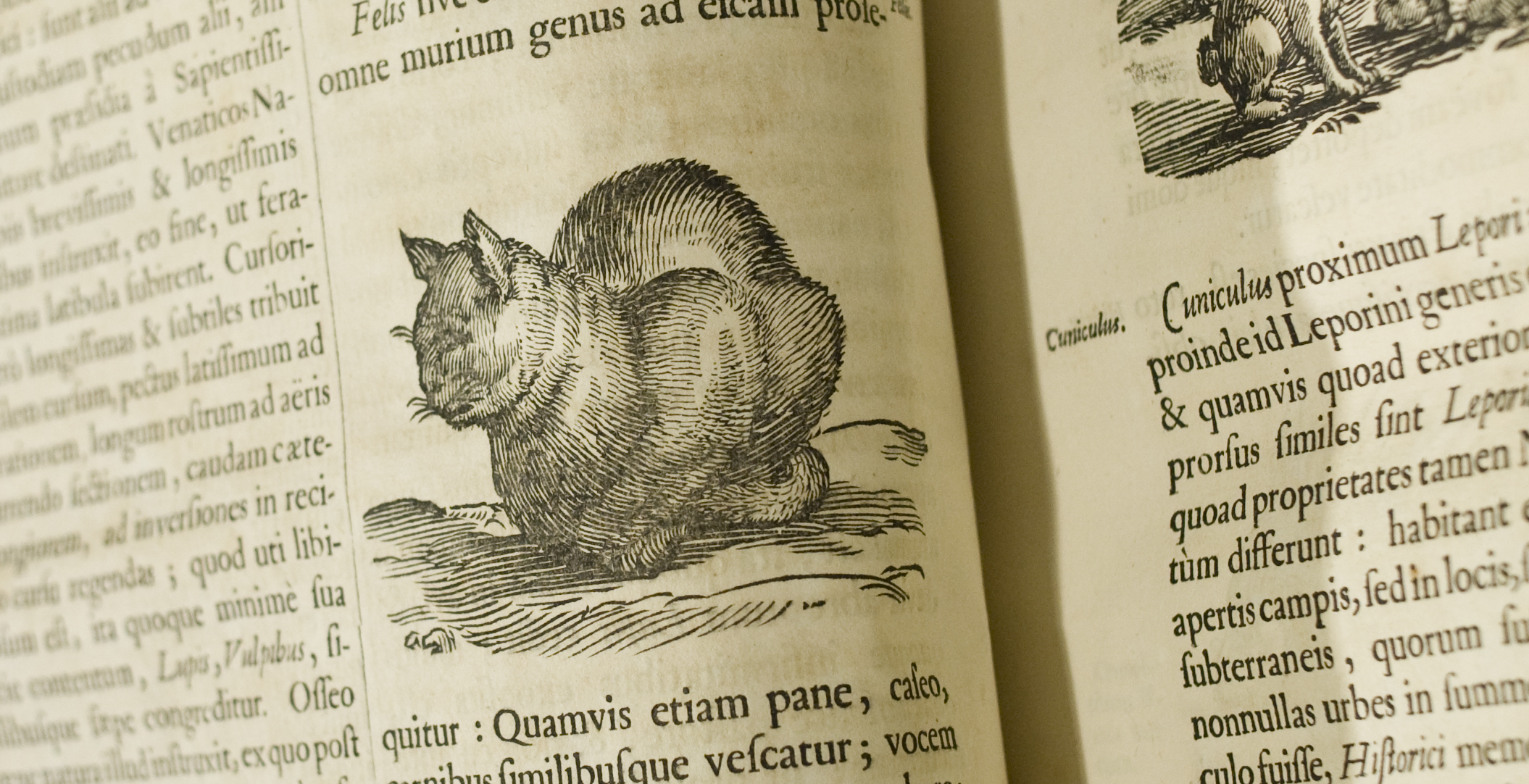
P.S. Here’s a domestic cat from Kircher’s Arca Noe! So cute to imagine a scholarly Kircher considering the need for domestic cats to be included in Noah’s menagerie, wonderful!
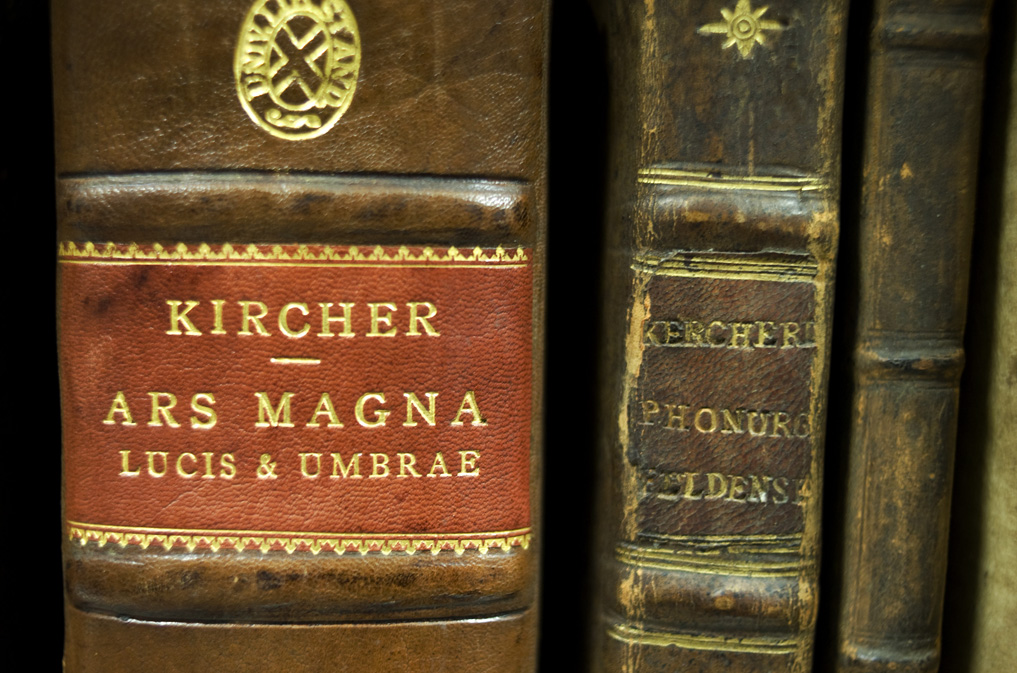
I love these posts from Echoes from the Vault. Such treasures you have and how interesting you make them all for the readers!
Thanks so much!
Reblogged this on jamesgray2 and commented: This is a wonderful collection!